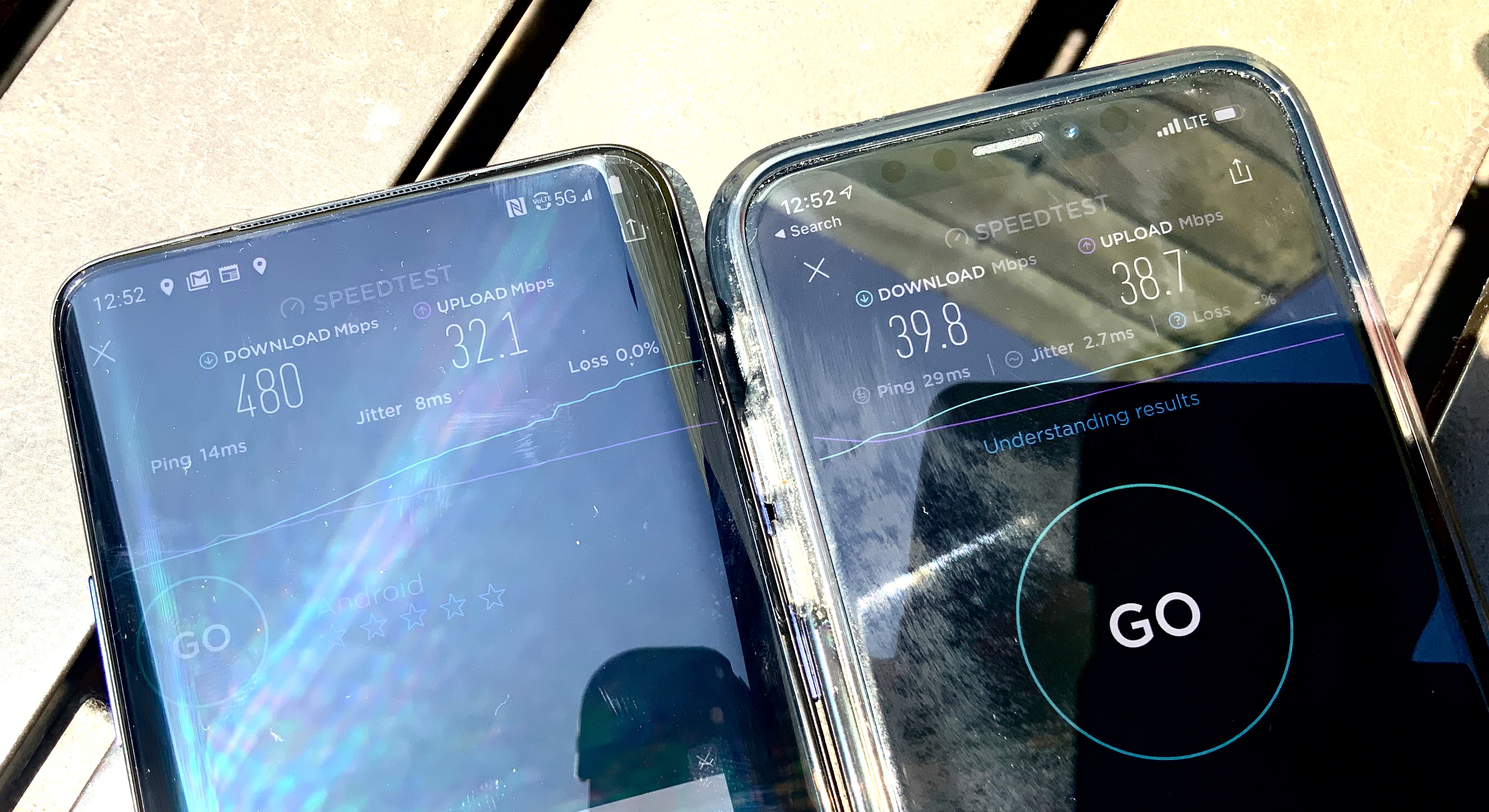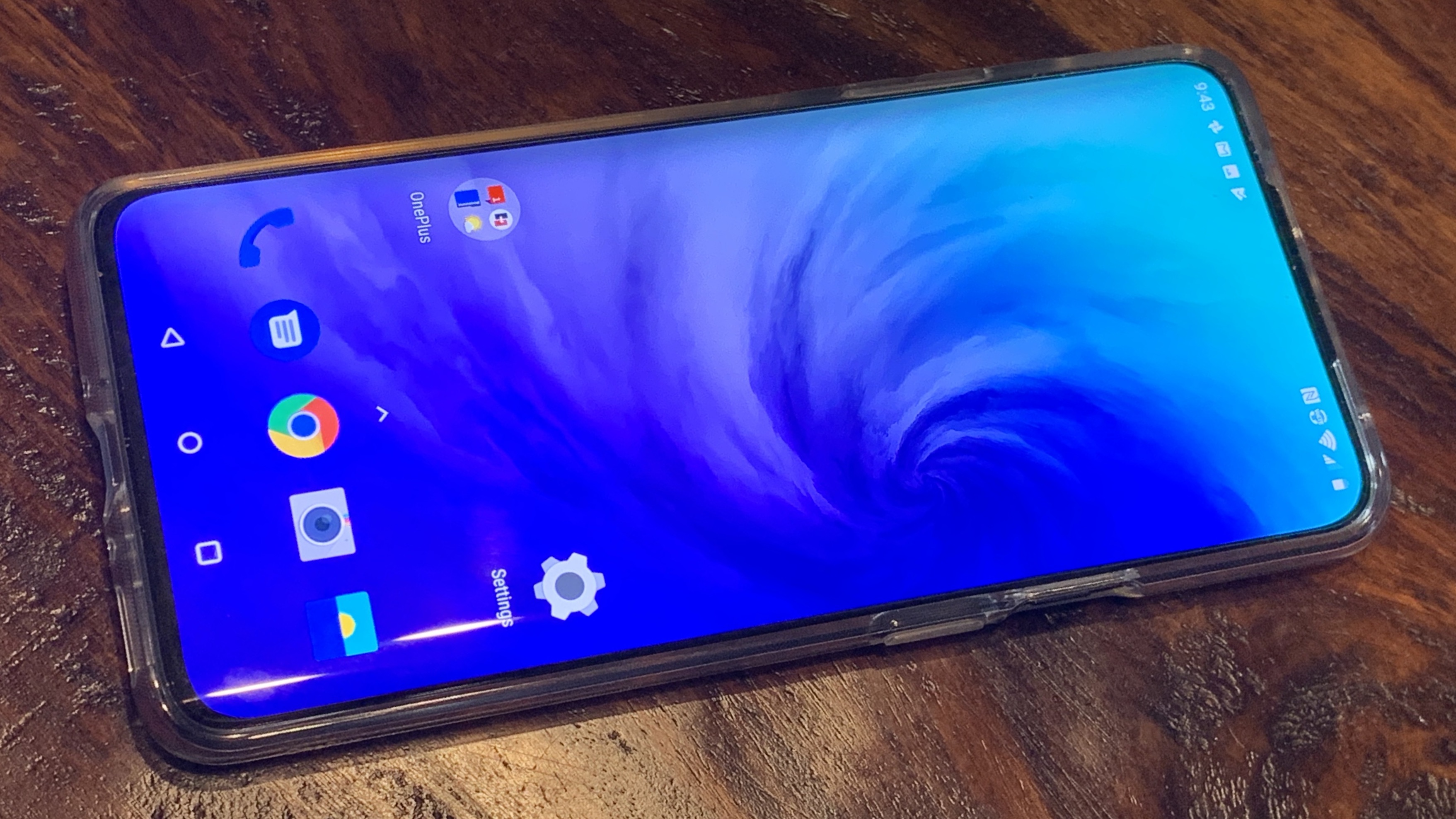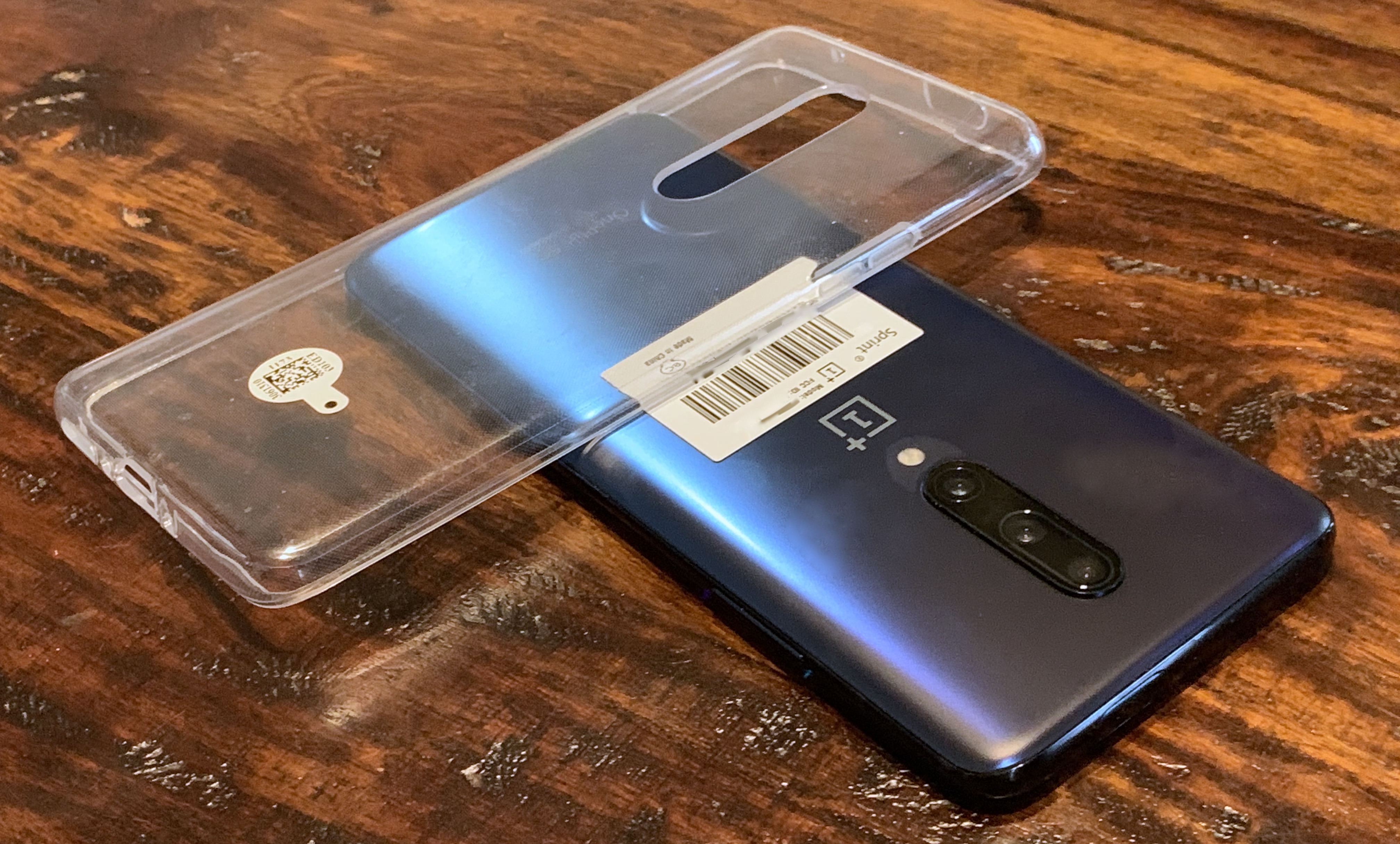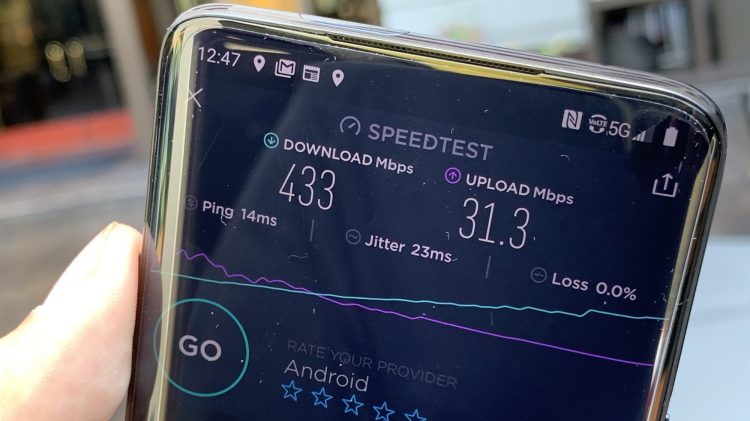Blame the overaggressive marketers. Last year, they claimed 5G cellular networks would launch with unthinkably fast speeds, putting home broadband power into your pocket even before there were use cases to properly exploit it.
It didn’t actually go that way. While 5G has launched across multiple countries, most carriers aren’t using insanely fast, short-distance millimeter wave towers to deliver 10 times 4G speeds; instead, they’re relying on “mid-band” radios with smaller performance multipliers. But unlike mmWave signals, mid-band signals can reach devices indoors and in cars, as well as at greater distances. Their peaks aren’t as high, but they don’t zero out when coming in contact with walls and windows.
That’s Sprint’s approach to 5G, and on balance I’d pick it over the alternative of theoretically faster mmWave 5G that isn’t actually available to consumers (AT&T) or that only works for blocks before disappearing (Verizon). As of this week, you can actually use Sprint’s 2.5GHz mid-band 5G in parts of nine major U.S. metros — think cities, plus or minus a bit — and there’s a new 5G phone on the block: the OnePlus 7 Pro 5G.
I’ve been testing the phone and Sprint’s network in Southern California over the past day, and I’m impressed. This is an opportunity to experience the near-term future of 5G at a reasonable price point — $840 for the hardware outright, less on a Sprint lease — including features that are about to become the “new normal” for Android phones over the next year:
June 5th: The AI Audit in NYC
Join us next week in NYC to engage with top executive leaders, delving into strategies for auditing AI models to ensure fairness, optimal performance, and ethical compliance across diverse organizations. Secure your attendance for this exclusive invite-only event.
- Super-fast wireless speeds. The OnePlus 7 Pro downloaded at nearly 500Mbps on Sprint’s Los Angeles 5G network and almost identically fast on my home gigabit Wi-Fi 5 network, both faster than the current Apple flagship iPhone XS.
- Access to unlimited data and optional 5G services, such as Sprint’s game streaming service Hatch Premium.
- The hardware and software: a large, nearly bezel-less screen backed by a Qualcomm Snapdragon 855 processor and superior cameras, paired with mature, responsive Android software.
This isn’t a review, but rather an opportunity to look at how Sprint’s 5G service and Android 5G phones are going to work over the next year or so. Read on for all the details.
5G mid-band speeds: 500Mbps now, 1.6Gbps possible
Before I went off to test Sprint’s 5G network myself, I spoke with a collection of Sprint executives regarding both the current state of their 5G network and future plans — to the limited extent they could discuss them in light of their in-the-works merger with T-Mobile. The key takeaways from the discussion were:
- Expect “average” 5G download speeds of 200Mbps. That number is not only low on paper, but around a third the speed of Verizon’s promised average 5G service. Real-world testing from Ookla has pegged the average at 236Mbps, but often closer to 300Mbps, depending on the city.
- Expect peak 5G download speeds today in the 600-700Mbps range. That’s again one-third of Verizon’s best number, Ookla says, but you might see better peak performance if you’re in the right city. And this will improve over time.
- Sprint’s theoretical download speed peak with mid-band is 1.6Gbps, the executives confirmed, when all of their 5G features are enabled and deployed in the field. That’s not the case today, and the company wouldn’t commit to a hard date for this level of performance to move from its labs to its 5G towers.
- If it happens, Sprint’s merger with T-Mobile will enable the two carriers to combine complementary assets, relying on T-Mobile for lower-band, slower 5G and higher-band, faster 5G, with Sprint’s mid-band 2.5GHz network in the middle. Sprint execs would not discuss any future 5G metros beyond the current nine, nor any plans except to extend coverage within those cities.
In my personal and certainly not exhaustive testing of Sprint’s Los Angeles 5G with the OnePlus 7 Pro 5G phone, I saw a peak stationary download speed of 480Mbps with a peak upload speed of 32Mbps. Driving in a car on the city’s notoriously packed freeways, I saw download speeds ranging from 127Mbps to 288Mbps on 5G, notably through car windows that would have killed millimeter wave 5G signals. The phone fell back to sub-100Mbps speeds — typically in the 50Mbps or lower range — when I dropped off 5G onto Sprint’s LTE network.

Above: OnePlus 7 Pro 5G (left) on Sprint’s 5G network, with an iPhone XS on T-Mobile’s 4G network (right).
My nearly year-old flagship iPhone, the iPhone XS, sat nearby on T-Mobile’s LTE network. At the same places and general times, the iPhone never broke a peak of 90.8Mbps for downloads. This isn’t to say the iPhone can’t do better under ideal conditions — I saw it hit 154Mbps once last year — but as a general statement, 5G made all the difference when the OnePlus 7 Pro 5G hit 480Mbps while the iPhone was hovering between 39.8Mbps and 57Mbps, averaging roughly one-tenth the speed.
(I’m not saying a 10:1 cellular performance difference between 5G and 4G phones is guaranteed, linear, or otherwise wholly correlated. To be very clear, the appropriate performance expectation for a 5G phone is that it will deliver 4G performance akin to existing flagship 4G phones, then step up by a multiplier if and when you’re in a 5G-covered area. More on that later.)
The OnePlus phone also made strong use of Wi-Fi connections. While it peaked at 75.9Mbps on an 802.11n (Wi-Fi 4) connection, it roared up to 485Mbps on an 802.11ac (Wi-Fi 5) connection, consuming almost half the peak bandwidth of my home gigabit internet service. That’s faster than most computers, according to charts provided by Cox, and my iPhone XS was only hitting 389Mbps when connected to the same servers. I’ve seen it go faster only one time, nearly two months ago, but in a head-to-head test with OnePlus the Android phone won out.
Unlimited 5G data for streaming games and VR
Another key part of the Sprint 5G equation is unlimited data — but with optional paid add-ons to take deeper advantage of the network. Users currently must pay $70 to $80 per month for 5G service equivalent to a faster version of unlimited 4G, bundled with free subscriptions to music and video services such as Tidal and Hulu, while next-generation services demanding lower latency are separate.
I have very mixed feelings as to whether this business model will work over the long term. But we’re going to see a lot of experimentation with it over the next few years regardless, and Sprint’s initial 5G use case is gaming.

During my meeting with Sprint executives, I went hands-on with Hatch Premium, an $8 per month service that has been promoted as including all-you-can-play access to 100 games — it’s now 150, Hatch says. Compared with using the Google Play Store, there’s a key differentiator: Rather than downloading the games onto your device, Hatch streams them from cloud servers with no perceptible latency. Sprint’s non-standalone 5G network currently delivers 15-25ms latency, with plans to drop into the single digits once standalone 5G becomes available in 2020, but in my testing with a couple of casual games over 5G, latency just wasn’t an issue.

Above: Even on a pixel level, Arkanoid Rising streaming via Hatch Premium is virtually indistinguishable from having the game live on your device.
Without doing too deep a technical dive, I’ll mention that Hatch has some novel techniques for streaming games over 5G, reducing the need to broadcast canned video to devices. The result is that you’ll sometimes see new assets popping into place in low-, medium-, and full-resolution variations, albeit typically not in ways that affected gameplay, and more obviously when I re-tested Hatch on home Wi-Fi than when I initially experienced it on Sprint’s 5G network.

Will multi-player Twitch gaming like Fortnite work over 5G? We’ll see. Sprint is hosting an event that will use multiple HTC 5G Hubs to let hard-core players experience 5G speeds and responsiveness. I suspect it will go quite well, but there’s always room for better latency, particularly when multiple simultaneous connections are involved.
My broader question is whether it’s worth using 5G network bandwidth to stream mobile-caliber titles such as Space Invaders: Infinity Gene or Angry Birds Go! when the games could just be sitting on the device without contributing to the choking of cell towers. Answering this involves value judgments regarding content that are beyond the scope of this article, but while no one would suggest downloading the full library of a video service such as Netflix, different all-you-can-play strategies (see: Apple Arcade) may make more sense and prevail in the 5G era. Or not — the practicality of 5G game streaming remains to be seen, but the technology certainly works.
I also had the ability to test two live 5G VR scenarios over Sprint’s network, most notably a “telepresence” VR experience, where I was transported from a Marina del Rey hotel to a nearby pier for a live conversation with a Nokia representative. Looking through a standard Oculus Go headset connected over Wi-Fi to an HTC 5G Hub, I could fully turn my head 360 degrees in any direction and see the beach, waves, people, and the Nokia rep moving completely fluidly as if I were there — of course, minus human vision-caliber levels of detail.
The 5G VR demos were better than anything I saw at CES earlier this year: noticeably higher resolution, with no artifacts or scene-building as I quickly turned my head in any direction, and only minimal lag. Additionally, while I was the only participant in the VR demo, it is capable of hosting multiple people at once. And the total cost of Sprint’s VR broadcasting gear was under $1,000: just a $300 360-degree camera and a $500-ish HTC 5G Hub, streamable to sub-$200 Oculus Go headsets users could provide themselves.
At these prices, VR streaming over 5G is going to become an actual thing, as pioneering livestreamers will start buying and using the broadcasting gear for all sorts of events beyond those currently covered by larger corporations. Just like game streaming, the underlying 5G technology for VR is now here and working, assuming you’re willing to buy the hardware needed to take advantage of it.
OnePlus 7 Pro 5G as Android’s new normal
I’m not going to fully review the OnePlus 7 Pro 5G, but it’s an excellent phone — and all indications are that it’s close to table stakes for the 5G phones that will be ubiquitous next year. Right now it’s special because it delivers a $1,250 iPhone XS Max-beating experience for under $850, but in 2020 lots of phones are going to be doing that.

That isn’t to say every 5G phone next year will pack a 6.67-inch AMOLED screen, triple rear camera system, Dolby Atmos audio, Snapdragon 855-class processor, and 256GB of storage. But the fact that such a package is possible for $840 today (before carrier subsidies) means that variants with similar features will soon become commonplace, if not the standard Android phone experience.
The OnePlus 7 Pro 5G is charming because there aren’t any rough edges. You turn on the phone and everything from the curved display glass to the wallpaper animation just looks beautiful — it feels like something from the future has arrived a little early. Everything feels snappy and fluid, from the Android 9-based Oxygen OS to apps, games, and the camera, which shifts effortlessly between 0.6x wide-angle, 1x normal, and 3x zoom lenses on the back and a semi-wide selfie lens on the front. As a photographer, I really appreciate the wide range of supported focal lengths, which means better landscapes and stronger optical zoom than my iPhone XS. Apple’s flagships will go further next month, but for an $840 Android phone, this is a great place to start.
There’s no better way to describe the OnePlus 7 Pro 5G’s screen than “gorgeous.” It’s bigger than any past or present iPhone display, bending gently at the left and right edges and as bezel-free on the top and bottom as the iPhone XS is on its left and right. It’s impossible to miss the AMOLED’s bright, vivid colors, particularly as there’s no distraction from an unsightly camera notch. OnePlus hides its front-facing camera in a durable, anti-drop-tested pop-up housing and uses a super-fast in-screen fingerprint scanner as its primary means of biometric authentication.

Above: Beyond the flagship-class internal specs, OnePlus includes a carrying case, screen protector, and super-fast 30W charger with every 7 Pro 5G phone.
Audio is also impressive. OnePlus is using a Dolby Atmos system with the ability to produce spatialized audio effects that you can actually hear on the device’s miniature soundstage. While most apps won’t take advantage of it — I wasn’t blown away, for instance, by Sprint’s included Tidal service, which promises atypically high-definition audio — apps that do can deliver superior sonic performance.
Coming from an iPhone, the OnePlus 7 Pro 5G feels like a device engineered to Apple standards, but without Apple compromises. You get a bigger display than on the iPhone XS Max, with more camera hardware and arguably more convenient biometric security, for $840, rather than Apple’s $1,100 entry-level Max price. Since the OnePlus 7 Pro 5G includes 256GB of storage, which Apple charges a $150 premium for, that’s a $400 savings. The iPhone XS Max certainly has its own advantages, but not enough to cover that sort of price gulf.
Parting thoughts
When I say that Sprint’s version of the OnePlus 7 Pro 5G is effectively Android’s new normal for the 5G era, I mean it. No company has a monopoly on elegant industrial designs, beautiful screens, fast processors, great cameras, or fluid software at this point — Chinese, Japanese, Korean, and American phone makers are all competing, with access to the same essential building blocks.
For this year, cellular performance is a potentially major differentiator. Sprint delivering 200-500Mbps 5G speeds on the regular to Android phones in parts of supported cities is meaningfully better than what users have seen with 4G. That’s at least twice, if not three to 10 times faster than 4G, depending on various factors, and enough to enable those nearly instant video and app downloads we’ve all been hearing about.
I’m more impressed by Sprint’s 5G network performance than I expected to be. The carrier’s coverage map of Los Angeles is significant, and the speeds I saw in my limited testing were enough to make a real-world difference for traditional video streaming, as well as enabling high-resolution VR and game streaming that wouldn’t have been viable before. Being able to take at least some advantage of those speeds indoors and in cars is a non-trivial benefit that rivals such as Verizon are apparently still working (as of 3Q 2019) to figure out.

That said, I’m not personally rushing to switch from my current carrier to Sprint quite yet. I live in Orange County, south of Los Angeles, which Sprint flagged in a press release yesterday as receiving some 5G support. It’s a large county, but I haven’t found any 5G coverage near my home, and in person Sprint’s executives were cautious to downplay the service’s availability outside of Los Angeles proper.
Just as was the case at the start of 4G service nearly a decade ago, actually finding 5G coverage in your area is going to be a matter of looking at Sprint’s current coverage maps and crossing your fingers. If the T-Mobile/Sprint merger is completed and 600MHz blanketing and mmWave high-speed zones work as expected, the next questions will be where you can find fast and fastest 5G coverage, which should prove plenty confusing for average consumers.
For the time being, I’m just glad to see a flagship-caliber 5G phone that begins to deliver on the promises of its new technologies at a reasonable price. After a year of blaming slow 5G network buildouts on the limited availability of 5G handsets, carriers now need to spread their 5G towers far enough to let users enjoy these exciting handsets’ capabilities.

